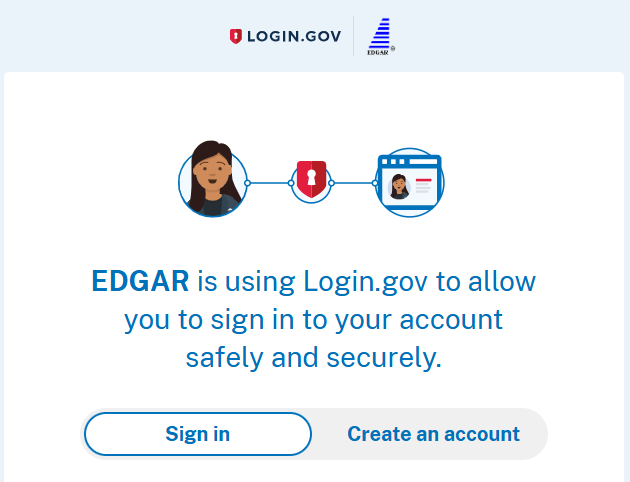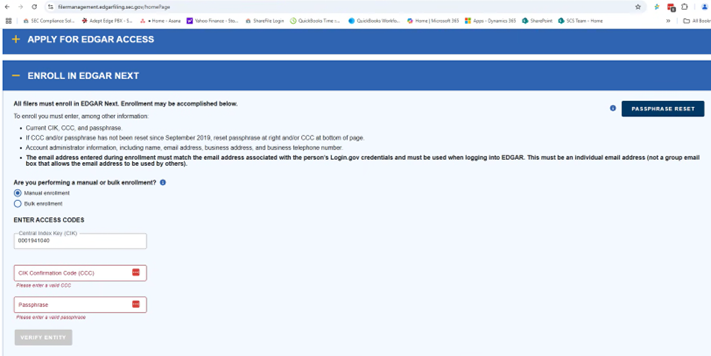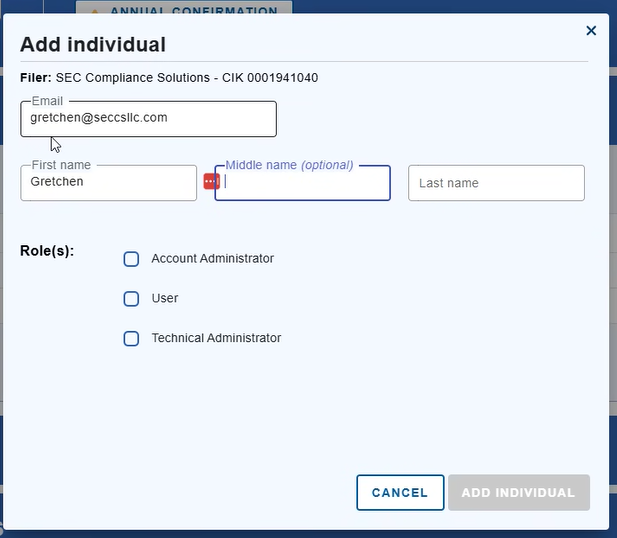EDGAR Next and Login.gov Instructions
Main Contributor: Betsy Harker, Compliance Associate
Updating Your Account to EDGAR Next
EDGAR is transitioning its system to EDGAR Next. Enrollment is required for all existing EDGAR filers. To avoid interruption in the ability to file, existing filers should enroll between March 24, 2025 and September 12, 2025.
New filers whose amended Form ID applications are granted by SEC staff after March 24, 2025, are automatically subject to EDGAR Next and do not need to enroll.
Beginning September 15, 2025, existing filers that have not enrolled in EDGAR Next will be unable to file on EDGAR until they enroll. Enrollment ends on December 19, 2025. After December 19, 2025, filers that have not enrolled must submit a new amended Form ID application for EDGAR access in order to file on EDGAR or access their accounts.
A filer may enroll itself or may select anyone it trusts to enroll, including but not limited to the filer’s employee, filing agent or law firm, or other trusted entity or individual.
We’ve put together step-by-step instructions below so that you can easily transition to EDGAR Next.
Step 1: Sign up for a Login.gov account
Before you begin, set up your personal account credentials with Login.gov.
Every individual who accesses EDGAR must have a Login.gov account with two forms of identification.
Use your work email address, not your personal email address.
The email address must be an individual email address (not a group email box that allows the email address to be used by others).
If you already have an existing Login.gov account using your work email address, use those credentials.
Step 2: Convert your existing EDGAR account to EDGAR Next
Click “Sign in with Login.gov”
Sign in using your Login.gov account
Click “Enroll in EDGAR Next > Manual Enrollment”
Enter your firm’s CIK number, CIK Confirmation Code (CCC), and Passphrase
If the CCC and/or passphrase haven’t been reset since 2019, then you will need to reset the codes.
There are links to reset the CCC or passphrase on the EDGAR Next enrollment page.
To reset the passphrase you need access to the email associated with the EDGAR account. If the email isn’t current, it can be updated at Retrieve/Edit Data on the EDGAR Filing Website using your CIK and CCC. thttps://www.edgarfiling.sec.gov/Welcome/EDGARLogin.htm
Instructions to reset the passphrase and CCC are also available on the EDGAR Filing Website and at https://www.sec.gov/files/edgar/filer-information/reset-passphrase.pdf.
6. After successfully entering your CIK, CCO and Passphrase, click “Verify Entity.”
7. Answer whether your firm is a Single-Member Company (Yes/No).
If you respond “Yes,” then you are only required to one account administrator (although more than one is recommended).
If you respond “No,” then you are required to have a minimum of two account administrators.
8. The individual setting up the EDGAR Next account will be the first account administrator and the EDGAR point of contact. The point of contact will receive all EDGAR notifications. (This can be changed after additional account administrators are added.)
9. Enter additional account administrators.
You will need the individual’s Name, Email address that matches their Login.gov credentials, business address, and business telephone number.
These individuals will receive an email invitation. To accept, they will need their own Login.gov credentials.
You can have multiple individuals from your firm be account administrators. If you prefer, you could also have someone a SCS as one of the account administrators.
10. Select the annual EDGAR Next account confirmation date. The account must be confirmed annually.
11. Log out and then login again. Your firm will show up under “My Accounts.”
Step 3: Customize your EDGAR Next account
Click on your firm in “My Accounts.”
Once logged in, you can manage individuals, the CCC and Password, and Delegations.
Go to “Manage Individuals” to add additional Account Administrators, Users or Technical Administrators. Definitions of the various account roles are below.
Go to “Manage CCC & Password” to view/update your CCC. A new CCC is automatically generated when you create the EDGAR Next account. You can view your new CCC or change it. You can also update your EDGAR password. The password will only be used until September 15, 2025, when only Login.gov individual account credentials will be accepted.
Go to “Manage Delegations and User Groups” to delegate filing authority to another entity. You will need to delegate to SCS in order for us to submit filings on your behalf.
SEC Compliance Solutions – CIK 0001941040
We will receive and accept the delegation in our EDGAR Next account.
Descriptions of EDGAR Next roles
Account Administrator (i.e. the CCO and at least one other individual):
Submit filings, view CCC
Generate/change CCC
Manage account administrators, users, technical administrators and delegated entities
Delegate to another filer
Manage user API token
Submit annual confirmation of account information
Serve as point of contact for SEC
User (add if desired):
Submit filings, view CCC
Manage user API token
Technical Administrator (add if desired):
Manage filer API token
Delegated Administrator (i.e. SEC Compliance Solutions, attorneys):
Submit filings, view CCC
Manage delegated users
Manage user API token
Delegated User (i.e. authorized employees at SEC Compliance Solutions):
Submit filings, view CCC
Manage user API token
Final Notes
An Account Administrator can do everything that a User can do, so there’s no need to add a User unless you want someone other than at a Delegated firm to make filings.
The API tokens are used to authenticate machine-to-machine interactions using optional APIs (Application Programming Interfaces).
The API tokens will generally be handled by the delegated entities making the filings, but we’ll let you know if you need to do anything.




